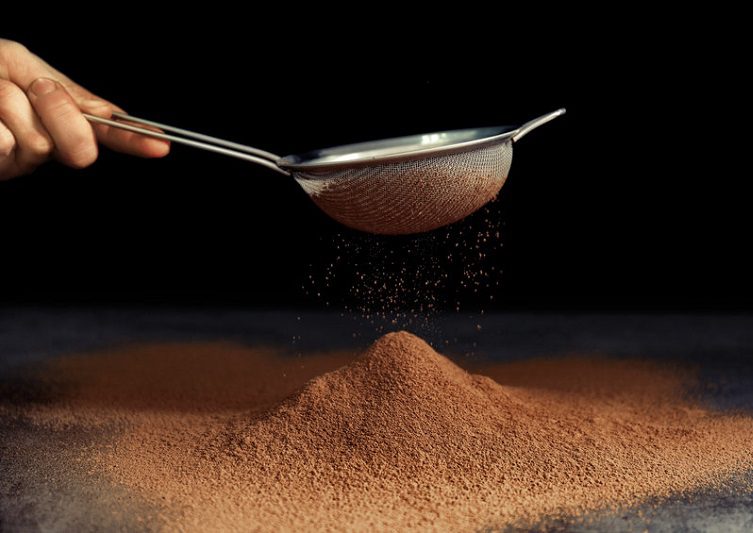The science of cocoa powder
September 8, 2021 by DarcieNot all cocoa powders are made the same. You might be familiar with the terms Dutch-process and natural, but beyond those two main characteristics lies another world of nuance. There are different “dutching” processes, as well as differences between the cacao bean varieties used to create the cocoa. Throw in divergent fat percentages and your head can spin trying to figure out what it all means. A recent Washington Post article breaks down the science of cocoa powder so we can better understand this delicious ingredient.

The biggest difference lies between Dutch-process and natural cocoa powder. Natural cocoa powder is acidic, while Dutch-process cocoa has been treated to reduce its acidity, resulting in a more pH-neutral product. This has implications for the leavening agents used in baked goods: baking soda is alkaline and relies on acid to activate it. Swap Dutch-process for natural cocoa in a recipe with only baking soda and you will reduce the lift the soda should provide.
Another thing to look out for is the fat content of the cocoa powder, which can range from 10 to 35 percent fat. Most recipe writers and pastry chefs agree that this a case of the more the merrier. With more fat comes a higher price – most supermarket cocoa will have only about half as much fat as premium brands. You won’t find the fat percentages listed on the label, so look for the phrase “high-fat” or shop for well-known quality brands.
The article also contains links to sources of information on cocoa powder, so you can easily find yourself going down a rabbit hole to learn more. Since I already have five different cocoa powders in my pantry, I’m trying to avoid discovering yet another ‘must have’ brand so I abstained from clicking on most of those links. Now I’m hungry for brownies.
Categories
- All Posts (6940)
- Antipasto (2135)
- Author Articles (247)
- Book News (935)
- Cookbook Giveaways (983)
- Cookbook Lovers (257)
- Cooking Tips (109)
- Culinary News (299)
- Food Biz People (552)
- Food Online (791)
- Holidays & Celebrations (272)
- New Cookbooks (149)
- Recipes (1500)
- Shelf Life With Susie (231)
- What's New on EYB (133)
Archives
Latest Comments
- eliza on What foods do you look forward to the most for each season?
- kmwyman on Rooza by Nadiya Hussain – Cookbook Review and Giveaway
- Maryd8822 on The Golden Wok – Cookbook Giveaway
- Dendav on Danube Cookbook Review and Giveaway
- sanfrannative on Rooza by Nadiya Hussain – Cookbook Review and Giveaway
- darty on Danube Cookbook Review and Giveaway
- Atroyer7 on Danube Cookbook Review and Giveaway
- demomcook on What foods do you look forward to the most for each season?
- demomcook on Danube Cookbook Review and Giveaway
- Darcie on How cookbooks can help build resilience